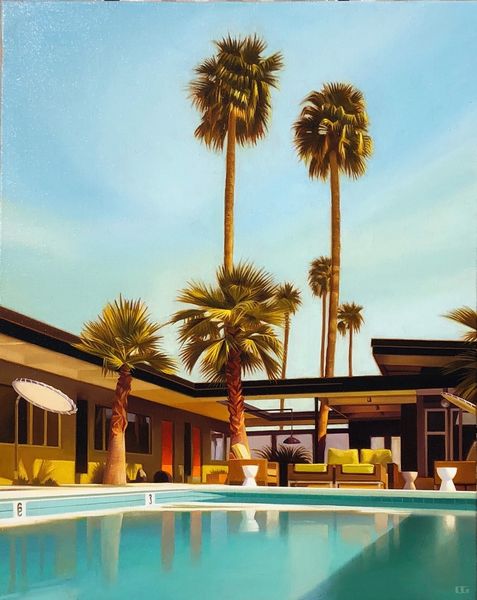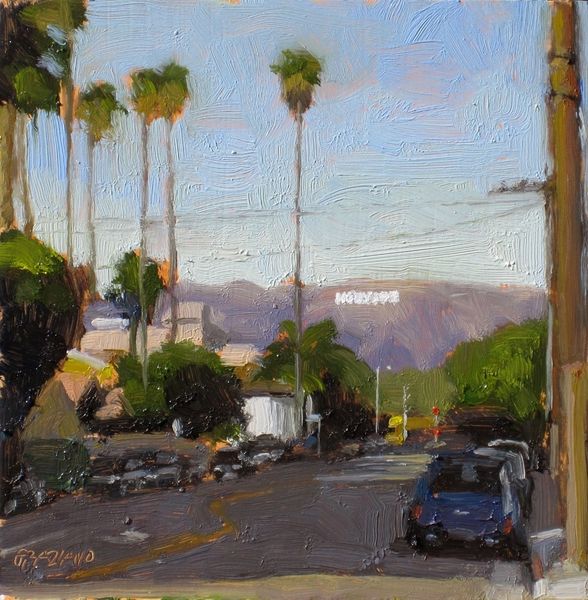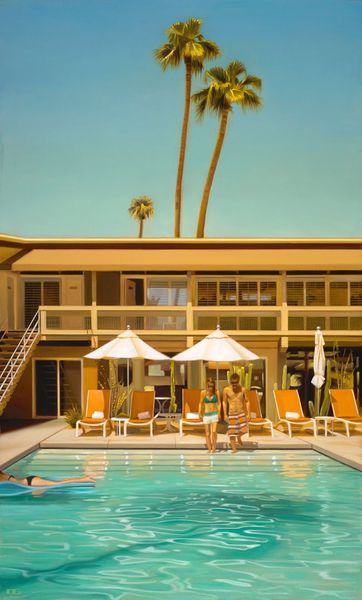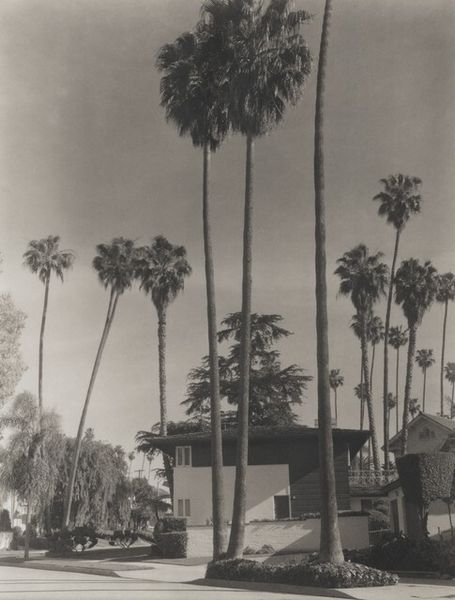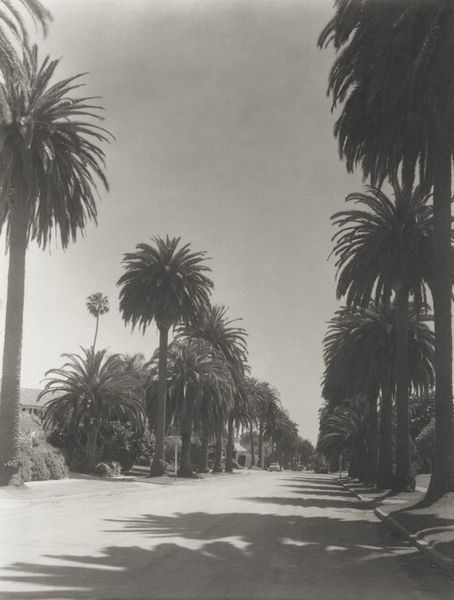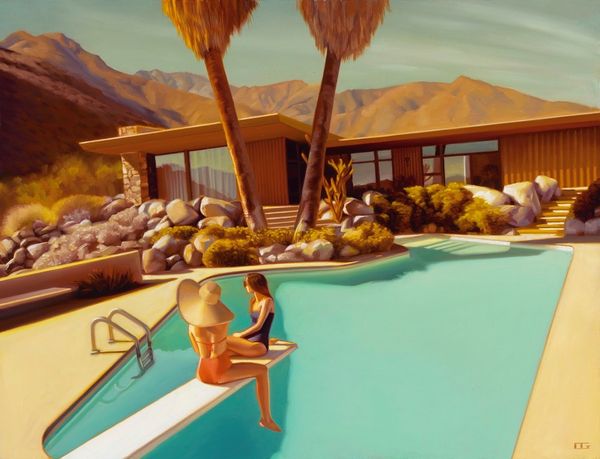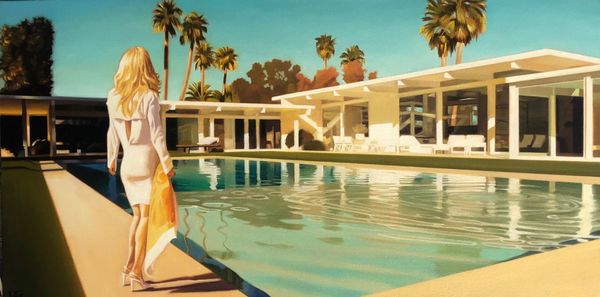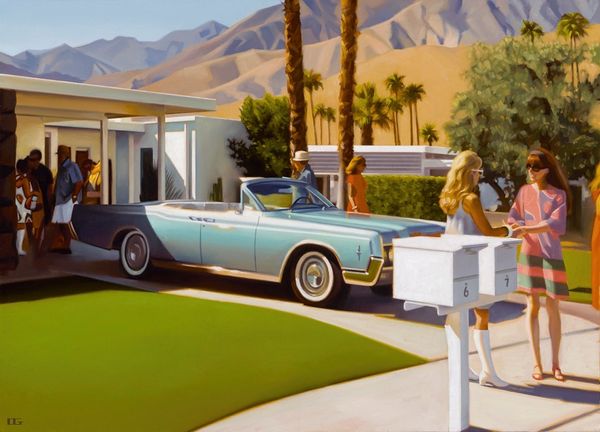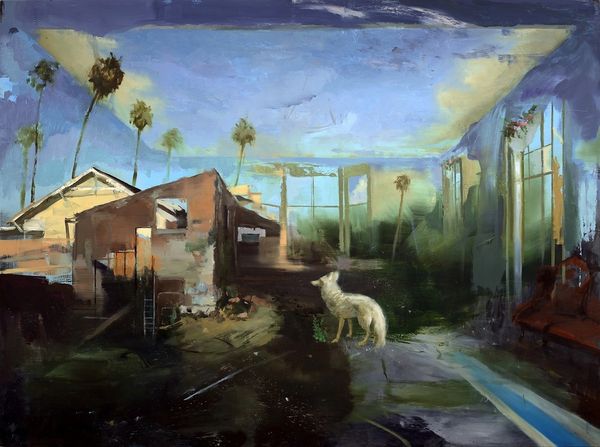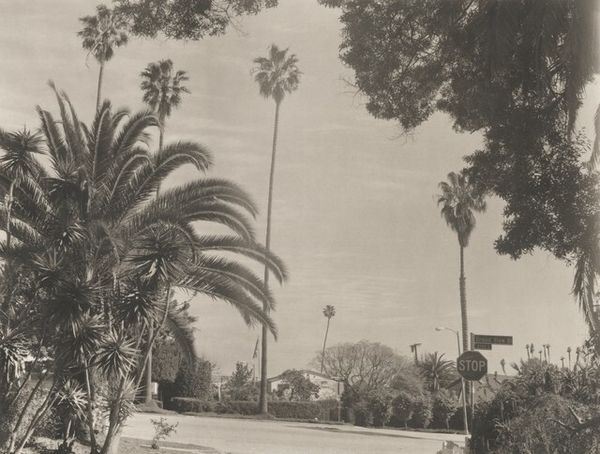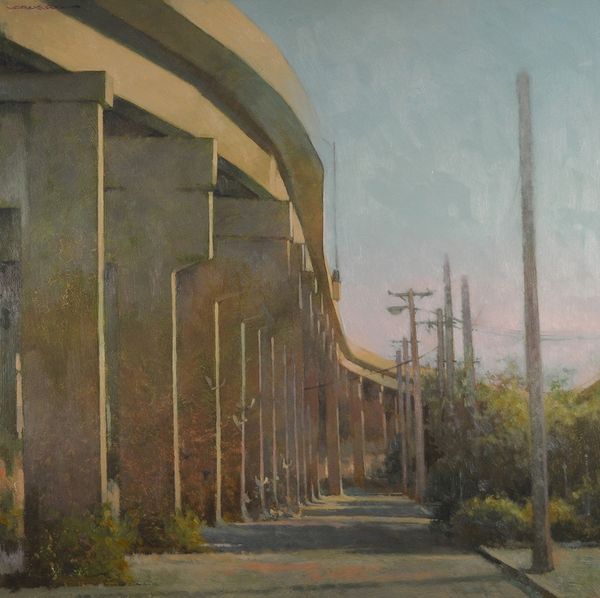
painting, acrylic-paint
#
painting
#
landscape
#
acrylic-paint
#
cityscape
#
modernism
#
realism
Copyright: Modern Artists: Artvee
Curator: This acrylic-on-panel artwork is entitled "The Dinner Hour on Fair Circle," by Carrie Graber. It presents a golden-hued snapshot of domestic life nestled in a landscape that seems to epitomize a certain Californian dream. What are your first impressions? Editor: Isolation, primarily. The overwhelming sense I get is of being cut off, set apart. It’s this pristine scene, the vintage car shimmering in the sunset, yet there’s something deeply unsettling about the perfection, something unsettling in that imposed peace. Curator: I'm struck by the way the artist balances realism with a heightened sense of color and light. This evokes the specific locale—perhaps Palm Springs or a similar desert community—but the airiness almost sanitizes any social narrative. It's hyper-real. Editor: Exactly! Look at that car; it signifies an era of supposed American prosperity. But even this symbol seems drained of its vitality, more of a static display piece than a functional object. We're seeing the remnants of aspirational living, but scrubbed clean of the socioeconomic realities that fueled it. Curator: It’s fascinating how Graber focuses on these archetypal images—the palm trees, the manicured lawn, the classic car. This piece feels embedded in the broader narrative of the Californian dream sold through popular culture. But that dream has, historically, often excluded specific segments of the population. Editor: Absolutely, it represents exclusion as much as aspiration. This constructed idyll masks complex racial and class hierarchies, reflecting who has access to that carefully constructed peace and who does not. Consider the stark lines of the building itself, boxy. There’s a coldness inherent in such rigid design. Curator: Graber also plays with light and shadow, emphasizing certain details while obscuring others. I believe this underscores a selective representation, controlling how viewers interpret the scene. And where are the people? Where’s the neighborhood life one might anticipate from the title? Editor: And the title itself drips with irony, doesn't it? "The Dinner Hour," this is the moment of domestic intimacy, family gathering… but there’s no visible sign of life. Instead, a disquieting silence. The whole thing smacks of something rotten hidden beneath the façade of wealth. Curator: Examining the piece closely reveals how much is intentionally absent. It encourages a crucial examination into what underpins such images, their inherent symbolism and the narrative of access, but also who has historically been shut outside its perimeter. Editor: Precisely. By unveiling this carefully manicured isolation, the work allows us to engage more openly in conversation about the American dream – who gets to dream it, and at what cost?
Comments
No comments
Be the first to comment and join the conversation on the ultimate creative platform.
